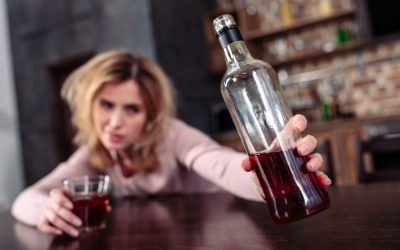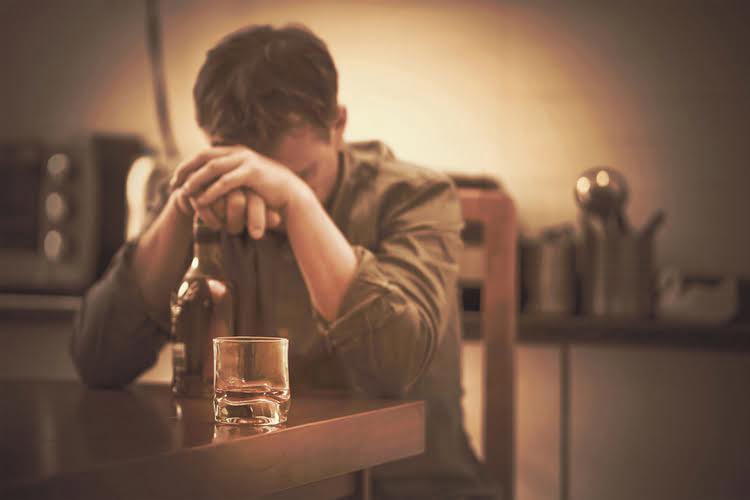It’s best to read ingredient labels and research brands, like those mentioned above, to explore and discover the experience you’re looking for. If you aren’t interested in a buzz, CBD drinks may suit your goals better than cannabis-infused drinks. Smoking weed after drinking alcohol may intensify the effects of weed.
What should I do if I get sick from drinking cannabis-infused beverages?
With a PhD in emulsion chemistry, Han helped found Vertosa to ease consumer access to and appreciation for cannabis beyond fearmongering and enduring stigma. Jamie Evans, also known as the Herb Somm, has been exploring the intersection of cannabis, wine, and fine dining since 2017. Evans worked for years in the wine industry before recognizing the parallels of wine pairings and profile evaluation with weed, and has even launched her own alcohol-free cannabis wine, Herbacée. Thankfully, legalization and scientific application have made it easy these days to infuse everything, from seltzer water to coffee to fake beer, with the cannabinoids of your choosing.
Smoking weed after drinking alcohol
One study in the British Journal of Pharmacology demonstrated that THCA might have a protective effect on brain cells. Marijuana, on the other hand, is known for its less desirable effect on memory. Again, you’d think the two would balance each other out, but that doesn’t seem to be the case.
How Are Cannabis-Infused Drinks Made?
They produce milder effects and do not cause a heavy stoned sensation. The mild euphoria or buzz gives a sense of renewal to some individuals. Tinctures can also be made with alcohol, from which alcohol can be evaporated and substituted with glycerin. When cannabis flower or concentrate is left with alcohol for a few weeks with daily shaking the container, the compounds bind to alcohol. When this is strained to remove the plant material, it is called cannabis tincture. This can be taken as drops under the tongue or incorporated into drinks and food.
The risks and consequences of marijuana use for young adults.
These drinks, which can be purchased at dispensaries or online, contain various amounts of THC in addition to alcohol, caffeine, or other cannabis derivatives. The safety of these drinks has not been studied extensively in humans. Cannabis-infused drinks offer a whole new kind of high substance use disorder sud and social buzz. Read on to take a deeper dive into their safety and this thriving new industry. Frequency of use was another risk factor for psychosis, such as weekly or daily use, with those using the drug daily at elevated risk for serious psychiatric problems such as psychosis.
For example, smoking is rough on your lungs, but this risk doesn’t apply to edibles. Generally speaking, weed tends to come with fewer risks than alcohol, but there are a lot of factors to consider. Plus, they’re unique substances that produce different effects, which makes side-by-side comparisons difficult. Most cannabis drinks are only allowed to have 5 milligrams of THC per government regulation, which is a great starting point for novices. If it’s your first time with THC, remember Kirk and Lankenau’s “low and slow” method.
This might seem like a good thing, but it makes it harder to know how impaired you really are. For example, a 1992 study had 15 participants smoke a placebo, a high dose of THC, or a low dose of THC on three occasions. On each occasion, they’d rank a different dose of alcohol, including a placebo, as a low dose or a high dose. However, this study was pretty small, making it hard to draw any firm conclusions.
The researchers demonstrated that it was effective in reducing nausea and vomiting. Another study, this time in the journal International Immunopharmacology, also tested the effects of unheated cannabis extract. However, these three cannabinoids do not occur naturally in high concentrations in raw weed. Raw weed contains these three cannabinoids with a carboxylic acid attached. Experts refer to these compounds as delta-9-tetrahydrocannabinolic (THCA-A), cannabidiolic acid (CBDA), and cannabigerolic acid (CBGA).
With smoking or vaping, this step is skipped, which is why you may feel high much quicker after hitting a joint or a vape. From humble beginnings in Colorado and Washington in 2012, cannabis legalization has jumped alcohol use disorder and depressive disorders pmc to 21 states, along with Washington, D.C., and Guam. The market has skyrocketed since, it is projected that cannabis users globally will spend nearly $5 billion dollars annually on THC products by 2025.
If you or anyone you know is undergoing a severe health crisis, call a doctor or 911 immediately. Note that not all states legalize the recreational use of cannabis, and the use of this substance is still not approved on the national level. Cannabis is currently classified as a Schedule I drug, which the Drug Enforcement Administration defines as a drug with “no currently accepted medical use and a high potential for abuse.” LSD and heroin are also Schedule I.
- Cannabis-infused beverages are often branded as a healthier alternative to alcohol — “No painful days after drinking or regrets,” a tagline on Cann’s site reads.
- Other forms of cannabis, including edibles, can also interact with alcohol to cause most of the same risks as smoking cannabis.
- “Compared to alcohol, the risk profile of cannabis in its various forms is generally lower,” says Lankenau, noting that fatal overdoses with marijuana alone is negligible.
- This, of course, depends on the factors above, but generally, the more frequent & concentrated your cannabis use and a higher body fat level will mean more time required for THC traces to exit your system.
An unfortunate side effect of the conventional treatment of chronic illness is a decrease in appetite. Not only does this steal away the pleasure of food, but further deprives the body of the nutrients needed to restore wellness. A powerful natural painkiller, dagga is well known for its analgesic properties.
When they first began developing Artet in 2015, creating shrubs out of a kitchen in Brooklyn before relocating to California, the trio wanted to bring cannabis into social environs beyond puff-puff-pass. Now, novel technology has allowed beverage startups to create better-tasting weed tonics, beers, teas, and aperitifs, reaching casual consumers looking for an alternative to alcohol. This Black women-owned line of cannabis cocktails can be sipped straight or used as mixers, and with just 2.5 mg of THC per ounce, you can ease into the experience and tailor it to your own tolerance.
Levia, which is based in Massachusetts and available at dispensaries throughout the state, comes in three flavors, and which you choose will likely depend on the mood you’re in. Achieve (raspberry lime) is designed for getting stuff done, Celebrate (lemon lime) is for hanging alcoholic eyes with friends, and Dream (jam berry) is for chill mode. Try pouring it over ice with a splash of lemonade and muddled basil for a refreshing pick-me-up at happy hour. It’s also important to note that, in 2017, among adolescents aged who used marijuana, 22% were depressed.
















Comentários